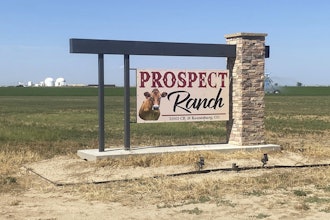
LOS ANGELES (AP) — A 2015 explosion at a California oil refinery that injured four workers and threatened to release a toxic cloud was preventable, a federal safety panel reported Wednesday.
The U.S. Chemical Safety and Hazard Investigation Board released a 73-page report that identified technical issues that led to the blast in a Los Angeles suburb and indicated safety issues remain.
ExxonMobil — which owned the refinery at the time — said it regrets the incident and will work with the board to understand the findings and recommendations
The CSB could revisit its investigation pending the release of certain documents that ExxonMobil had failed to provide, board officials said during a press conference.
ExxonMobil provided more than 350,000 pages of documents and company officials "strongly disagree with any statement that questions our responsiveness or level of cooperation," spokesman Todd Spitler said.
"We offered to make additional documents available if the CSB could provide a sufficient basis for the documents and agreed to respect commercial confidentiality, which they have not done," he said.
The Feb. 18, 2015 blast in Torrance occurred when flammable hydrocarbons flowed into a spark-producing pollution control device called the electrostatic precipitator, which was being prepared for maintenance.
The explosion destroyed a large part of the refinery, rocked the neighboring community 20 miles southwest of Los Angeles and sent a fine white ash raining down on nearby homes and cars.
The blast tossed an 80,000-pound piece of equipment within feet of another unit where tens of thousands of pounds of modified hydrofluoric acid were stored in tanks.
The safety board previously said that carried the potential to release a toxic cloud into the neighborhood and cause "serious injury or death to many community members."
"This explosion and near miss should not have happened, and likely would not have happened, had a more robust process safety management system been in place," said Vanessa Allen Sutherland, chair of the CSB.
In its new report, the board cited problems with safety procedures and said critical safeguards designed to prevent an explosion failed.
Among other things, plant managers used "unreliable and unsafe isolation methods" on equipment, the report said.
The plant also re-used a procedure developed for a similar maintenance operation in 2012 without doing a "hazard analysis" to determine if it was proper for the 2015 operation and operated a piece of refining equipment "beyond its predicted safe operating life," the report said.
The refinery also lacked any safety instruments to detect hydrocarbons flowing into the precipitator, which seems to be "an industry-wide problem," according to the report.
The board lacks regulatory or enforcement authority but can make safety recommendations. It suggested a number of changes to safety procedures for all U.S. refineries operated by ExxonMobil.
They include requiring a risk analysis of all electrostatic precipitators and creating safeguards to reduce the consequences of an explosion.
"This incident was preventable; weaknesses in the ExxonMobil Torrance refinery's process safety management program led to a hydrocarbon backflow," the report said.
Federal regulators previously came to the same conclusion, and California regulators fined ExxonMobil more than $500,000 for safety violations.
The plant, now called the Torrance Refining Co. currently is owned by New Jersey-based PBF Energy Inc. A message seeking comment from PBF on the report was not immediately returned.
The safety report recommended that the plant install systems to prevent flammable gasses igniting inside the electrostatic precipitator. The devices "have historically caused explosions within the refining industry," the report said.
The report didn't recommend abandoning the use of modified hydrofluoric acid, as critics of the plant have demanded in angry protests.
Assemblymember Al Muratsuchi, whose district includes Torrance, said he would push for a ban on hydrofluoric acid at all state refineries. He said he wants the Torrance facility to install air quality monitors in the community and maintain a notification system for residents in case of future emergencies.
The safety board noted that there have been four other leaks or fires at the refinery since the explosion, including one on Sept. 6, 2015 that released hydrofluoric acid and two fires in February of this year. No injuries were reported.






















